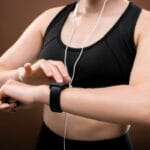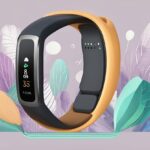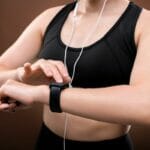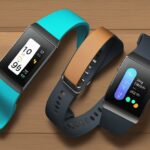Are you stuck choosing between the Fitbit Versa 4 and the Sense 2? Picking a smartwatch shouldn’t send you into a spiral of indecision, but these two Fitbit models sure make it tempting.
The main difference is that the Sense 2 offers more advanced health features like ECG readings, skin temperature tracking, and real-time stress detection, while the Versa 4 keeps things simple (and a bit easier on your wallet).
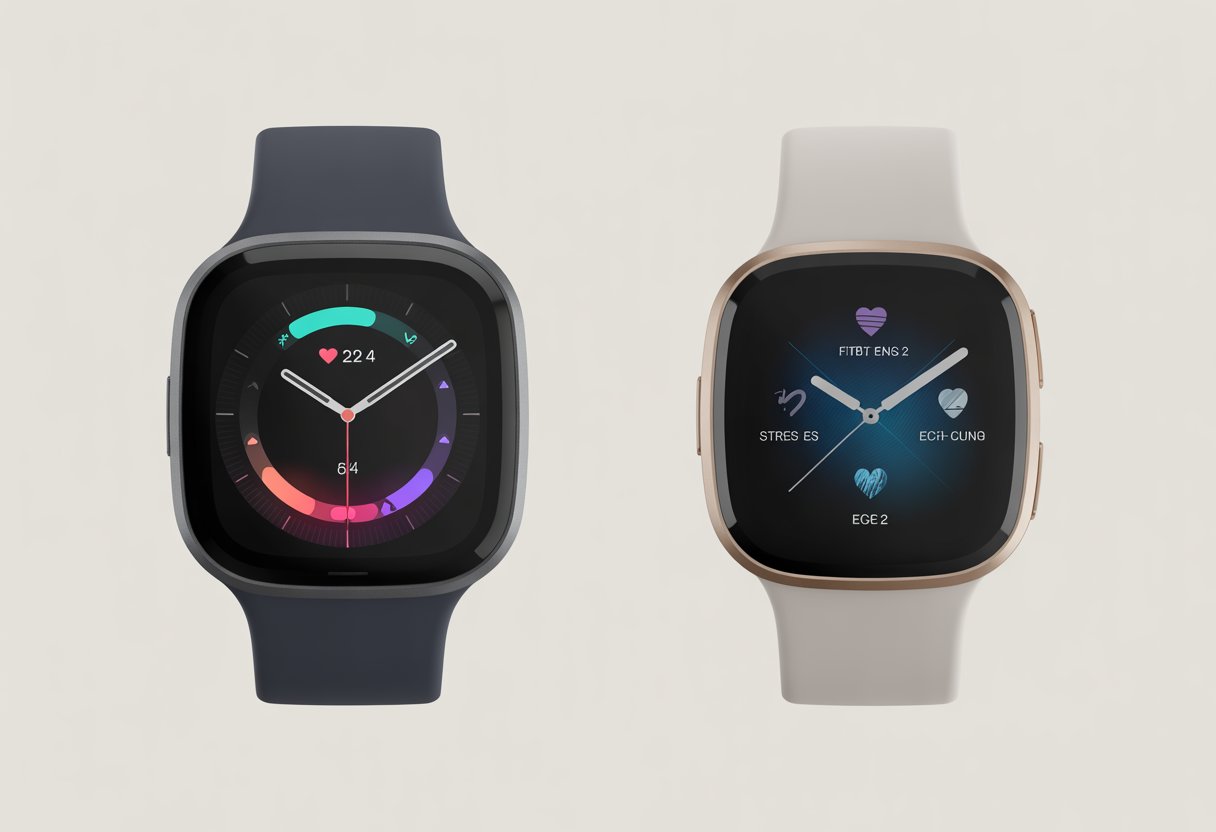
You probably don’t want to pay extra for features you’ll never use—unless tracking your stress becomes your new hobby. But which smartwatch fits best with your lifestyle, budget, and knack for losing chargers?
Get ready to finally crack the code on the Fitbit Sense 2 vs Versa 4 showdown without falling asleep from tech jargon. Is the extra health data from the Sense 2 worth the extra cash, or does the Versa 4 hit that perfect sweet spot of features and price?
Let’s untangle the must-know details so you can get moving faster—and with fewer headaches.
Fitbit Versa 4 vs Sense 2: Key Differences
Choosing between the Fitbit Versa 4 and Fitbit Sense 2 isn’t as simple as picking whichever looks shinier. These two Fitbit models are close siblings, but they aren’t twins.
They have unique features that can make a big difference in your daily life if you wear your watch more than your favorite hoodie.
Design and Comfort
If you worry about your wrist starting to feel like it’s lifting weights, good news: both the Versa 4 and Sense 2 are lightweights. Their case sizes are nearly the same—Versa 4 measures 40.4mm, while the Sense 2 is just a hair bigger at 40.5mm.
That’s about as close as you get without them sharing socks. Both wearables come with soft bands and slim profiles, making them comfortable for all-day wear, whether you’re hitting the gym or just sprinting to the fridge.
The screens are bright, colorful, and easy to read, even if your eyes are more potato than eagle. The main difference in how they feel on your wrist may depend on how sensitive you are to ultra-tiny size differences.
Spoiler alert: most people can’t tell without a microscope.
Hardware and Performance
Here’s where the big stuff happens. The Fitbit Sense 2 packs more health sensors than the Versa 4, like the ECG (to check your heart rhythm) and the cEDA sensor (for those times you want your watch to know you’re stressed before you do).
The Versa 4 skips both, but it still tracks heart rate, steps, sleep, and your “I walked up the stairs” victories. Both models include GPS, fast charging, and smartphone notifications.
You won’t find third-party apps like you would on some other smartwatches, but you get all the classic Fitbit tracking you’d expect. The Sense 2 just adds a layer of “look how serious I am about health” if that’s your vibe.
If you want the fanciest sensors, pick the Sense 2. If you’re good with step counts and heart rate, the Versa 4 won’t judge you.
Pricing and Availability
Your wallet may sigh in relief or groan in pain depending on your choice. The Versa 4 is typically cheaper—a more wallet-friendly pick if you don’t need every bell and whistle.
The Sense 2 costs more, mainly because of its extra health features that the Versa 4 skips over like a kid avoiding broccoli. Both watches are widely available through Fitbit’s site and major retailers, so shipping won’t take as long as waiting for your next birthday.
When new Fitbit models launch, prices on these will likely get even better, so you can treat yourself without turning your wallet into a skeleton. If you’re looking for the full comparison and more specifics on the key differences, check out this Fitbit Sense 2 vs Versa 4 breakdown for details.
Fitness and Health Features
Whether you want to run a marathon, sleep like a baby, or just keep your stress level below “screaming internally,” both the Fitbit Versa 4 and Sense 2 have tools to help. These watches act like mini personal trainers, sleep counselors, and wellness gurus—minus the expensive hourly rate.
Exercise and Sports Profiles
You won’t be stuck counting steps like it’s 2010. Both models offer over 40 exercise modes, from walking and cycling to yoga and swimming.
Want a fitness tracker that knows the difference between a bike ride and a brisk walk? You’ve got it. Automatic exercise recognition means you don’t have to remember to start a workout (it’s as if the watch knows you better than you know yourself).
Versa 4 and Sense 2 both support GPS tracking for mapping your routes outdoors, and their built-in heart rate sensors help you see how hard you’re working. If you spring for Fitbit Premium, you get Daily Readiness Score, a feature that tells you if you should go big at the gym or take a nap instead.
Talk about personalized advice—sometimes you really do deserve that rest day.
Sleep Tracking and Sleep Profile
Sleep tracking on both watches is like having a sleep scientist on your wrist. You get detailed reports on how long you slept, your sleep stages, and whether your tossing and turning last night broke any records.
The Sleep Profile feature puts you in a fun animal category (are you a bear or a parrot?), all based on your sleeping habits. Both devices track your blood oxygen levels at night.
They also remind you to get to bed (like a strict but caring grandma). If you get Fitbit Premium you unlock even more insights and monthly sleep reports.
It’s all designed to help you wake up feeling more rested—or at least armed with excuses for why you’re still tired.
Stress and Wellness Tracking
Stress happens, but with the right tools you might just avoid turning into the Hulk. The Sense 2 jumps ahead with its electrodermal activity (EDA) sensor for real-time stress tracking.
That means it can actually sense when you’re heading toward meltdown-mode and recommend ways to chill out, like guided breathing. The Versa 4 sticks to basic stress management tools like mindfulness sessions and activity reminders, but skips the fancy sensors.
Both watches help you work toward a healthier lifestyle by tracking how active and calm you are each day. If you want the absolute best stress tracking Fitbit offers, the Sense 2 has the edge, but the Versa 4 still helps you avoid rage-quitting your day.
For more detail, see how Sense 2 adds ECG and advanced stress tracking features.
Smartwatch Capabilities
You don’t just want to track your steps—you want a wearable that actually does things. The Fitbit Versa 4 and Sense 2 offer some handy (and sometimes amusing) smart features to make your daily life easier.
Voice Assistants and Smart Features
If you like chatting with your tech, both watches let you talk to a virtual assistant, but with some differences. The Versa 4 lets you summon Google Assistant—great for those times you need to ask about the weather and don’t want to move your fingers.
Alexa is also available, so whether you want weather, reminders, or bad jokes, these assistants are just a wrist tap away. Fitbit Pay is on board for both models.
Yes, you can finally buy snacks without digging for your wallet. If you prefer Google Wallet, only the Versa 4 will say, “welcome aboard” to your digital spending habits.
You’ll also find both watches keep things simple—you won’t get a ton of third-party apps, but you do get essentials like timers, alarms, and a weather app. With GPS for both, you can leave your phone behind on walks and your map still works.
Want to pretend to follow a secret agent route using Google Maps? The Versa 4 says yes; the Sense 2 isn’t so sure.
So if navigation matters to you, pick wisely.
Notifications and Apps
Your wrist is about to become much busier. Both the Versa 4 and Sense 2 buzz you with notifications for texts, calls, emails, calendar alerts, and app reminders.
Android users can even send quick replies, but iPhone users get left out of that club. App choices are simple; think of them as the “greatest hits” rather than the whole record store.
You get a small but useful selection, including alarms, timers, weather, and a few fitness tools. Don’t expect to install dozens of random apps.
You also get call and message previews, which means you can sneak a peek at who’s bugging you during meetings. If someone calls, you can accept or decline it right from your watch, though you’ll need your phone nearby for actual talking (no secret agent wrist calls here yet).
Keep your phone in your pocket and let your watch do the social heavy lifting. If you’re looking for a ton of apps, you may want to look elsewhere, but for the basics, these Fitbits have your back—or at least, your wrist.
For more details about smart features, check the Fitbit Sense 2 vs Versa 4 comparison.
Sensors and Tracking Technologies
When it comes to fitness and staying healthy, you want your smartwatch to be more than a pretty face. These two Fitbit models come packed with sensors, making them like spy gadgets for your wrist—without the secret missions or exploding pens.
Built-in GPS and Physical Side Button
Both the Fitbit Versa 4 and Sense 2 have built-in GPS, so you can finally leave your phone behind without getting hopelessly lost. GPS tracks your run or walk routes even if your phone is enjoying a nap at home.
It makes mapping your pace and distance simple. You’ll get a physical side button on these models.
That’s right, a real button—no more wildly tapping the screen with sweaty fingers. The button helps you quickly start or pause workouts, wake the display, and open menus, saving your patience (and your wrist).
Water resistance is also included in both models. You can wear either watch in the rain or even in the pool.
Just remember, they track your laps; they don’t magically make you a better swimmer. Battery life will last several days for most users even with regular GPS use, but if you plan a marathon (or get lost and accidentally run a marathon), charging after the adventure might be wise.
More running, more GPS, more charging.
Skin Temperature and Electrodermal Activity
For anyone wanting a bit more than the basics, the Sense 2 really steps up. This model checks your skin temperature while you sleep.
You’ll know if you’re running a secret fever or just piled on too many blankets. It’s a nice touch if you’re curious about those midnight sweats.
The Sense 2 also packs an electrodermal activity (EDA) sensor. Sounds a bit science-y, but honestly, it’s there to sniff out your stress.
It tracks changes in your skin’s sweat level to catch signs of stress sneaking up on you. Ever wonder why you’re grumpy at 3 pm? The EDA sensor might rat you out.
The Versa 4 skips the EDA and skin temperature sensors. You still get solid fitness tracking, but you’ll have to rely on your own mood (and maybe a regular thermometer) to track stress and temp.
For more about the differences, check out this comparison of Sense 2 vs Versa 4.
Fall Detection and Safety
Staying safe isn’t just about counting steps. Fall detection is a big deal on smartwatches these days, but neither the Versa 4 nor Sense 2 includes it as of May 2025.
If you’re hoping your watch will call for help after a dramatic tumble, don’t test it—it won’t work. Both watches do include heart rate monitoring, so you can spot irregularities during workouts or just daily life.
If you’re worried about falls, you’ll need to stick with old-school tactics like being careful and grabbing handrails. Neither watch offers advanced safety alerts or automatic emergency calls.
They’re water-resistant, so if you take a spill into a puddle or jump in the shower, you’re covered there. But don’t expect any superhero rescue features.
Battery Life and Charging
You want your watch to last longer than your attention span in a dull meeting. Thankfully, both the Fitbit Versa 4 and Sense 2 deliver on battery life.
Both watches promise up to 6 days of battery life on a single charge. You can almost forget about your charger for a week.
Your wrist won’t start beeping if you forget your cable for a weekend trip. That’s a relief, right?
If you want the nitty-gritty, here’s a battery showdown.
Charging is quick—almost as fast as skipping spoilers online. In about 12 minutes, you’ll get a day’s worth of battery.
That’s just enough time to microwave popcorn. Both models fully charge in around 2 hours, so you’ll go from dead to ready before you finish binge-watching your show.
Here’s a quick battery comparison:
| Model | Battery Life | Fast Charging | Full Charge Time |
|---|---|---|---|
| Versa 4 | 6 days | Yes (12 min) | 2 hours |
| Sense 2 | 6 days | Yes (12 min) | 2 hours |
If you’re the forgetful type (phones, headphones, car keys), either watch will keep up with your routine. There’s no weird charging dock or sci-fi cable required.
Just plug in and charge up. Easy.
Subscription and Value
Both the Fitbit Versa 4 and Sense 2 offer solid fitness tracking on their own. But honestly, they nudge you toward Fitbit Premium.
Without it, you might feel like you’re only getting the trailer, not the whole movie. (Spoiler: the butler did it.)
Fitbit Premium Subscription Benefits
A Fitbit Premium subscription unlocks a bunch of features you don’t get for free—think deeper health insights, sleep and stress reports, and guided workouts.
You’ll get things like a daily readiness score, which warns you when it’s time to Netflix and chill instead of run a marathon.
With Premium, you also get hundreds of workout and mindfulness routines. It might make you look like a zen yoga master—at least until your cat walks across your mat.
Both Versa 4 and Sense 2 come with a free trial. If you get hooked, the subscription costs about $10 per month.
Here’s a quick breakdown:
| Feature | Free Version | Fitbit Premium |
|---|---|---|
| Basic Activity Tracking | ✔️ | ✔️ |
| Sleep Score | ✔️ | ✔️ (with more details) |
| Daily Readiness Score | ❌ | ✔️ |
| Guided Workouts & Mindfulness | ❌ | ✔️ (hundreds of options) |
| Advanced Health Metrics | ❌ | ✔️ (like stress & SpO2 trends) |
You don’t need Premium, but if you want all the bells and whistles, you might crave it like a midnight snack.
How Versa 4 and Sense 2 Compare to Other Fitbit Models
Think all Fitbits are the same? Not quite. The Versa 4 and Sense 2 aren’t just plastic and lights—they bring different features, prices, and vibes compared to the rest of the lineup.
Versa 4 vs Inspire 3 and Ace 3
The Versa 4 is the sporty sibling in fancy sneakers. The Inspire 3? More like the practical friend who shows up in slippers.
Versa 4 gives you a bigger color touchscreen, built-in GPS, and voice assistant support. Need to shout at your wrist to get things done? The Inspire 3 doesn’t bother with that.
If you’re eyeing the Fitbit Ace 3, just know it’s for kids. Think cartoon characters, not health stats.
The Ace 3 tracks steps and sleep and lets parents keep tabs. The Versa 4, meanwhile, tracks steps and sleep, but also flexes with workout modes, stress management, and stylish watch faces.
All three are solid. If you want a sophisticated smartwatch, go Versa 4. If you want a tracker that disappears on your wrist or keeps your kid happy, Inspire 3 and Ace 3 are your picks.
Sense 2 vs Charge 5 and Inspire 2
Sense 2 is the overachieving cousin at family dinners, tracking everything—including your mood. The Charge 5 and Inspire 2 are cool, but not quite as show-offy.
With Sense 2, you get ECG, skin temperature tracking, and a focus on stress management. It’s like wearing a therapist, minus the couch.
The Charge 5 leans more fitness-focused. It has ECG and built-in GPS, but can’t match all the health sensors on the Sense 2.
The screen’s smaller, but battery life is a bit longer. Inspire 2 is simpler: no color screen, no GPS, and no advanced heart monitoring.
It’s for folks who just want steps and sleep tracked, not a full medical readout. If you want all the bells, whistles, and a virtual high-five for managing stress, check out the Sense 2.
If you just want to know if you’ve moved enough today, Inspire 2 is happy to help—quietly, probably while napping in your pocket.
Choosing the Best Fitbit for Your Lifestyle
Picking between the Fitbit Versa 4 and Sense 2 feels a bit like choosing socks—you want the pair that fits your style and doesn’t stink up the gym. Both watches nudge you toward a healthier lifestyle, but each one brings its own quirks.
If you just need a trusty fitness tracker that counts steps, tracks sleep, and leaves your blood pressure alone, the Versa 4 is a solid, budget-friendly pick. It packs 40+ sports profiles, so whether you’re into yoga or more of an elliptical fan, it’s got you covered.
Here’s a side-by-side look to keep things simple:
| Feature | Versa 4 | Sense 2 |
|---|---|---|
| Price | Lower | Higher |
| ECG Readings | No | Yes |
| Skin Temp Sensor | No | Yes |
| Stress Tracking (real-time) | No | Yes |
| Sports Profiles | 40+ | 40+ |
If you want more advanced health features—like checking your ECG while avoiding awkward small talk at the gym—the Sense 2 has you covered. You’ll get tools for stress tracking, skin temperature readings, and even deeper heart health insights.
Are you feeling fancy, or do you just want the basics? Either way, your road to better health is about to get an upgrade. Just don’t expect either watch to grab your water bottle when you’re parched.
- Fitbit Versa 4 vs Sense 2: Which Wrist Buddy Wins the Smartwatch Showdown? - November 28, 2025
- How to use Bluetooth headphones with hearing aids: Avoiding Tech Tangles for Happy Ears - November 27, 2025
- Best Bluetooth Headphones for Pilates: Sweatproof Bops for Your Stretching Saga - November 27, 2025


